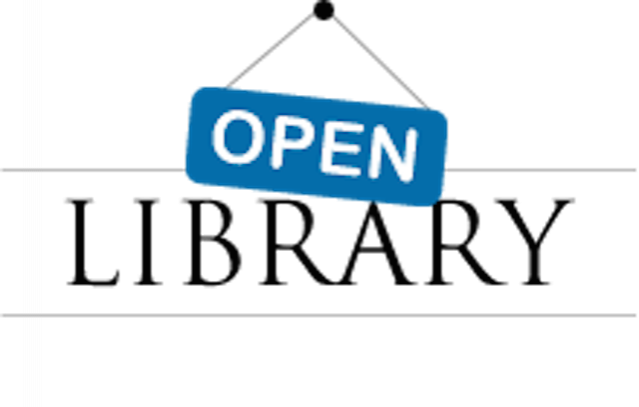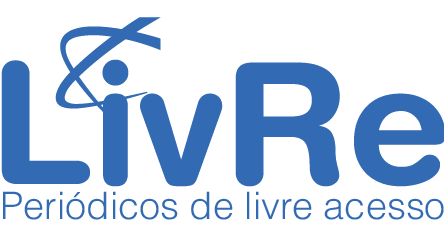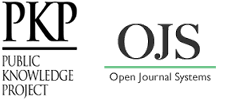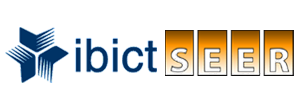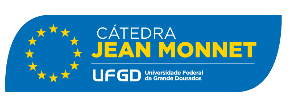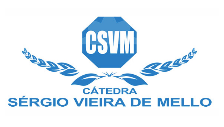Human rights of highly able/gifted persons: a necessary denounce
DOI:
https://doi.org/10.30612/videre.v16i35.17738Keywords:
High ability/giftedness, Anti-colonial. human rights. subalternity., High Ability/Giftedness. Human Rights. Exclusion.Abstract
The paper intends to discuss the rights of the high abled/gifted students within the Brazilian context. Thus, it presents and analyzes the main legal contributions dealing with the inclusion of the target public of the Special Education. Having an analytic descriptive approach, the study examines the main political and practical directions stated on documents and the educational social, cultural and identitarian evidences, which points at the omission - when not violation - of the rights these students have during all their educational path, showing how real is the inexistence of the transversality principle for this part of the target public of the Special Education, even naturalizing its excluding condition.
Downloads
References
ACEREDA-EXTREMIANA, A. Niños superdotados. Madri: Pirâmide, 2000.
BÁNFALVI-KAM, P. B. La rebelión del talento: personalizar el aprendizaje desde la comprensión de las Altas Capacidades. Archidona: Aljibe, 2020.
BORLAND, J. H. M. The Gifted Constitute 3% to 5% of the Population. Moreover, Giftedness Equals High IQ, Which Is a Stable Measure of Aptitude. Gifted Child Quarterly, v. 53, n. 4, p. 236-238, 2009. Disponível em: http://gcq.sagepub.com/content/53/4/236. Acesso em: 28 set. 2023.
BOURDIN, J.C. La invisibilidad social como violencia. Universitas Philosophica, 54, n. 27, 2010. 15-33.
BRASIL. Lei N. 4024, de 20 de dezembro de 1961. Fixa as Diretrizes e Bases da Educação Nacional, Brasília, Disponível em: https://www2.camara.leg.br/legin/fed/lei/1960-1969/lei-4024-20-dezembro-1961-353722-publicacaooriginal-1-pl.html. Acesso em: 28 set. 2023.
BRASIL. Lei N. 5692, de 11 de agosto de 1971. Fixa diretrizes e bases para o ensino de 1º e 2º graus, e dá outras providências. Disponível em https://www2.camara.leg.br/legin/fed/lei/1970-1979/lei-5692-11-agosto-1971-357752-publicacaooriginal-1-pl.html. Acesso em: 28 set. 2022.
BRASIL. Constituição Federal: República Federativa do Brasil.1988. Disponível em https://www.planalto.gov.br/ccivil_03/constituicao/constituicao.htm. Acesso em: 19 set. 2023.
BRASIL. Decreto No 99.710, de 21 de novembro de 1990. Promulga a Convenção sobre os direitos da criança. Disponível em https://www.planalto.gov.br/ccivil_03/decreto/1990-1994/d99710.htm
BRASIL. Lei nº 9.394, de 20 de dezembro de 1996. Lei de Diretrizes e Bases da Educação Nacional (1996). Disponível em: http://www.planalto.gov.br/ccivil_03/leis/L9394.htm. Acesso em: 20 set. 2023.
BRASIL. Documento Orientador. Educação Inclusiva: Direito a Diversidade. Brasília: Ministerio de Educação. Secretaria de Educação Especial, 2005. Disponível em http://portal.mec.gov.br/seesp/arquivos/pdf/orientador1.pdf. Acesso em 25 ago. 2023.
BRASIL, Ministério da Educação. Política Nacional de Educação Especial na Perspectiva da Educação Inclusiva. Brasília: 2008. http://portal.mec.gov.br/arquivos/pdf/politicaeducespecial.pdf. Acesso em: 20 set 2023.
BRASIL. Decreto Nº 7.611/2011 .Dispõe sobre a educação especial, o atendimento educacional especializado e dá outras providências Disponível em http://www.planalto.gov.br/ccivil_03/_ato2011-2014/2011/decreto/d7611.htm. Acesso em 25 ago. 2023.
BRASIL. Lei Nº 12.764, de 27 de dezembro de 2012. Institui a Política Nacional de Proteção dos Direitos da Pessoa com Transtorno do Espectro Autista; e altera o § 3º do art. 98 da Lei nº 8.112, de 11 de dezembro de 1990. Disponível em https://www.planalto.gov.br/ccivil_03/_ato2011-2014/2012/lei/l12764.htm. Acesso em: 22 set 2023.
BRASIL. Nota Técnica Nº 04 / 2014 / MEC / SECADI / DPEE. 2014. Disponível em: http://portal.mec.gov.br/index.php?option=com_docman&view=download&alias=15898-nott04-secadi-dpee-23012014&category_slug=julho-2014-pdf&Itemid=30192. Acesso em: 28 set. 2023.
BRASIL. Lei nº 13.146, de 06 de julho de 2015. Disponível em: http://www.planalto.gov.br/ccivil_03/_ato2015-2018/2015/lei/l13146.htm.
Acesso em: 9 out 2023
BRASIL. Lei nº 13.234 de 29 de dezembro de 2015. Altera a Lei no 9.394, de 20 de dezembro de 1996 para dispor sobre a identificação, o cadastramento e o atendimento, na educação básica e na educação superior, de aluno. 2015. Disponível em https://www.planalto.gov.br/ccivil_03/_ato2015-2018/2015/lei/l13234.htm.Acesso em 19 de out.2023.
CHAUÍ, M. Cidadania cultural: o direito à cultura. São Paulo: Fundação Perseu Abramo, 2006.
DE PAULA, A. R.; BUENO, C. L. R. Acessibilidade no mundo do trabalho. In: I Conferência Nacional dos Direitos da Pessoa com Deficiência – Acessibilidade: você também tem compromisso. Brasília: SEDH, 2006.
GROSS, M. U. M. The"me" behind the mask: Intellectually gifted students and the search for identity. Roeper Review, 3, n. 20, Feb 1998.
GUENTHER, Z.; FREEMAN, J. Educando os mais capazes. São Paulo: Pedagógica e Universitária. 2000HALL, S. A identidade cultural na pós-modernidade. Rio de Janeiro, RJ: D.P.& A., 2014.
MAIA-PINTO, R.; FLEITH, D. Percepção de professores sobre alunos superdotados. Estudos de Psicologia, 19(1), 78-90. 2002.
MARTELLI, A. C. P.; MOREIRA, L. C. A Transversalidade das Políticas Educacionais para Estudantes com Altas habilidades/Superdotação. Teoria e Prática da Educação, v. 24, n. 1, p. 42-57, 15 jun. 2021. Disponível em https://periodicos.uem.br/ojs/index.php/TeorPratEduc/article/view/54756. Acesso em: 6 nov. 2023.
MARTÍNEZ-TORRES, M.; GUIRARDO-SERRAT, Á. Alumnado con altas capacidades. Barcelona: Graó, 2010.
MATOS, D. M. de; MOREIRA, L. C. KUHN, C. Jovens Superdotados na Educação Superior: um desafio para a docência. APRENDER - Caderno de Filosofia e Psicologia da Educação, [S. l.], n. 26, p. 198-214, 2021. Disponível em: https://periodicos2.uesb.br/index.php/aprender/article/view/8632. Acesso em: 6 nov. 2023.
NATIONAL ASSOCIATION FOR GIFTED CHILDREN. Position Statements. NAGC’s definition of giftedness. Disponível em: https://cdn.ymaws.com/nagc.org/resource/resmgr/knowledge-center/position-statements/a_definition_of_giftedness_t.pdf. Acesso em 20 nv.2023.
PÉREZ-BARRERA, S. G. O culto aos mitos sobre as altas habilidades/superdotação? Psicologia Argumento, 29, n. 67, 2011. 513-531.
PÉREZ- BARRERA, S. G. Mitos e Crenças sobre as Pessoas com Altas Habilidades: alguns aspectos que dificultam o seu atendimento. Revista Educação Especial, [S. l.], v. 1, n. 1, p. 45–59, 2012. Disponível em: https://periodicos.ufsm.br/educacaoespecial/article/view/5004. Acesso em: 20 nov. 2023.
PÉREZ-BARRERA, S. G. Políticas públicas para las Altas Habilidades/Superdotación en América del Sur y México. In: IX Congresso Brasileiro de Educação Especial. São Carlos, São Paulo: Universidade Federal de São Carlos, 2021.
PÉREZ-BARRERA, S.G. Mitos sobre Altas Habilidades/Superdotación: creencias y prejuicios que siguen espantando. In: Maria Isabel de Araújo, Eliamar Godoy. D. L. D. S. L. S. G., PÉREZ-BARRERA A escolarização da pessoa com altas habilidades/superdotação: metodologias, estratégias propositivas e práticas inclusivas. Uberlândia: Paco Editorial, no prelo.
PÉREZ-BARRERA, S. G.; FERREIRA, J. F. C. ¿Y después que crecí? In: Susana Graciela PÉREZ-BARRERA Altas Habilidades/Superdotación: una nueva mirada. Montevideo, Uruguay: Universidad de la Empresa, no prelo.
PFEIFFER, S. I. Identificación y evaluación del alumnado con altas capacidades: una guía práctica. Logroño: UNIR Editorial, 2017.
PINTO, E. O problema da educação dos bem-dotados. São Paulo: Cia. Melhoramentos de São Paulo, 1933.
RECHE, A., FREITAS, S. N. Uma análise dos mitos que envolvem os alunos com altas habilidades: a realidade de uma escola de Santa Maria/RS. Revista Brasileira da Educação Especial. v. 11, n. 2. 2005. Disponível em: https://www.scielo.br/j/rbee/a/JDDL9DvMmFHgLxvRWsbm6Kj/abstract/?lang=pt. Acesso em: 9 nov.2023.
RENZULLI, J. S. The enrichment triad model: A guide for developing defensible programs for the gifted and talented. Mansfield Center, CT: Creative Learning Press, 1977.
RENZULLI, J. S. O que é esta coisa chamada superdotação e como a desenvolvemos? Uma retrospectiva de vinte e cinco anos. Educação, v. 27, n. 1, p. 75-131. 2004. Disponível em https://revistaseletronicas.pucrs.br/ojs/index.php/faced/article/view/375. Acesso em 20 out.2023
RENZULLI, J. S. Modelo de enriquecimento para toda a escola: um plano abrangente para o desenvolvimento de talentos e superdotação. Revista Educação Especial, v. 27, n. 50, p. 539-562, 2014. Disponível em https://periodicos.ufsm.br/educacaoespecial/article/view/14676. Acesso em 20 out.2023
RUSS, J. Diccionario de Filosofia. São Paulo: Scipione. 1994.
SIEGLE, D. Carta de los derechos de los niños y adolescentes Superdotados. 2006.
STERNBERG, R. J.; JARVIN, L.; GRIGORENKO, E. L. Explorations in Giftedness. New York: Cambridge University Press, 2011.
UNICEF. Estatuto da Criança e do Adolescente. 2023. Disponível em https://www.unicef.org/brazil/estatuto-da-crianca-e-do-adolescente. Acesso em 14 out.2023
WINNER, E. Crianças Superdotadas: mitos e realidades. Porto Alegre: Artmed, 1998.
WOODWARD, K. Identity and Difference. London: Sage, 2019.
ZIEGLER, A. et al. Exogenous and Endogeous Learning Resources in the Actiotope Modelo of Giftedness and Its Significance for Gifted Education. Journal for the education of the Gifted, v. 00, n. 0, p. 1-24, 2017. Disponível em: journals.sagepub.com/home/jeg. Acesso em: 2 nov. 2023.
Downloads
Published
How to Cite
Issue
Section
License

This work is licensed under a Creative Commons Attribution-NonCommercial-ShareAlike 3.0 Unported License.
Authors must accept the publication rules when submitting the journal, as well as agree to the following terms:
(a) The Editorial Board reserves the right to make changes to the Portuguese language in the originals to maintain the cultured standard of the language, while respecting the style of the authors.
(b) Authors retain the copyright and grant the journal the right to first publication, with the work simultaneously licensed under the Attribution-NonCommercial-ShareAlike 3.0 Brazil (CC BY-NC-SA 3.0 BR) that allows: Share - copy and redistribute the material in any medium or format and Adapt - remix, transform, and create from the material. CC BY-NC-SA 3.0 BR considers the following terms:
- Attribution - You must give the appropriate credit, provide a link to the license and indicate whether changes have been made. You must do so under any reasonable circumstances, but in no way that would suggest that the licensor supports you or your use.
- NonCommercial - You may not use the material for commercial purposes.
- Sharing - If you remix, transform, or create from material, you must distribute your contributions under the same license as the original.
- No additional restrictions - You may not apply legal terms or technological measures that legally restrict others from doing anything that the license permits.
(c) After publication, authors are allowed and encouraged to publish and distribute their work online - in institutional repositories, personal page, social network or other scientific dissemination sites, as long as the publication is not for commercial purposes.




